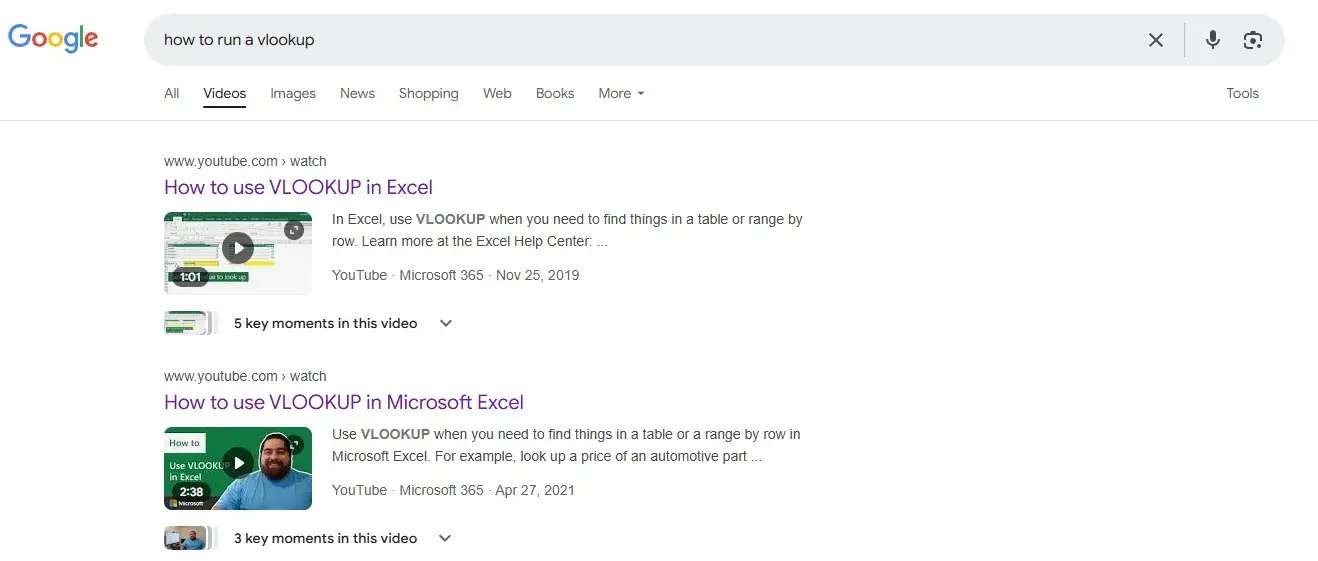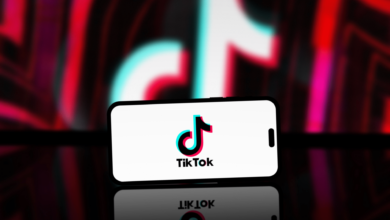Using video for branding: 5 best brand examples

Video is quickly becoming most marketers’ preferred tool for connecting and reaching new audiences.

Branding videos are undeniably effective: including a video on a landing page can increase conversion rates by over 80%and the simple mention of the word “video” in the subject of your email increases open rates by 19%.
For me, a good video can spark curiosity, make me ask questions, or even make me feel emotion.
But what separates good brand videos from unsuccessful ones? Here’s a look at what makes video marketing successful and five examples of brands that have found success.
Table of contents
What makes a brand video successful?
What is a brand video? Any video promoting your brand.
What makes a brand video successful? Any video that reaches your target audience and provokes the desired reaction.
For example, if I just launched a new outdoor clothing brand, my target audience might be people interested in camping or other outdoor activities. My desired reaction is for potential customers to visit my website or social media pages.
Therefore, my video should focus on what my product does, not what my product is. This might involve creating a short video of hikers exploring a new trail or campers setting up by a lake, all while wearing my clothes.
I wouldn’t show prices or talk about specific product lines; I would just show my equipment used in real life situations. At the end of the video, I would introduce the company name and their website.
Then I measure the reaction. Has my number of visitors increased? Have users left comments on social media pages or sent direct messages? If yes, then my video was a success. Otherwise, I have to go back to the drawing board.
Main characteristics of a brand video
Not two marketing videos are the same. Some target awareness, others drive conversions, and some focus on providing information.
However, regardless of intention, all good videos share five key characteristics:
Clarity: Good videos have a purpose and purpose. They have a clear message and use clear language and images to convey it. They also waste no time getting straight to the point. While there is no hard and fast rule here, ads should stay in the 30 seconds to 1 minute range for maximum impact.
Specificity: For branded video ads to work, they need to target a specific audience. For example, if you sell premium car care products, your audience is car owners. Make your ad too general and it won’t reach your target audience.
Authenticity: While it may be quicker and cheaper to create inauthentic videos using stock footage or actors standing in for real customers, users can tell if you’re not trying hard. Want better engagement? Put real people talking about real experiences on screen.
Quality: Your branding video doesn’t need the budget of a blockbuster movie, but it does need to look good and sound. Think clear images, crisp colors and clear audio. If your message is great but your quality is “meh,” your video won’t have the same impact.
Consistency: All videos act as ambassadors for your brand. Therefore, it is important to use consistent logos, fonts, colors and designs to ensure that users can easily recognize your products.
I know, it’s a lot to consider when planning your brand video and overall video marketing strategy. If you need help bringing your ideas to life, try HubSpot’s free AI video tool. Clip maker.
Five Examples of Great Brand Videos
1. Tasty
The objective: to increase brand awareness.
Video can help your business reach new audiences and drive new viewers to your social media pages and website, which is probably why “increasing brand awareness” is the number one reason brands use the video.
Take this video from Tasty, a Buzzfeed brand:
Ultimately, Tasty’s video isn’t meant to sell products (at least, not directly) – it’s simply meant to entertain new audiences and, ultimately, increase awareness of the Tasty brand.
Why do I think it works
The video works because it is entertaining. It’s silly, fun to watch, and provides a small but welcome diversion. Yes, he mentions Tasty, but that’s not what the video is about. Instead, the ad provides a starting point for viewers to learn more about food and recipes, which just so happens to be on the Tasty channel.
2. Fabtique
The objective: to generate new sales.
Think about how you could create entertaining or informative videos with the sole purpose of increasing your brand visibility.
Ultimately, brand awareness can foster trust and increase brand valuetherefore, it plays a vital role in your company’s financial results.
To emphasize this point, here is a video that I think is a good example. This video features Kate Hudson’s company, Fabletics:
Although, at first glance, this may seem like a somewhat random video from Kate Hudson which runs through the Aspen Wilderness, it is actually an effective example of a video designed to increase sales without looking like an advertisement.
For example, while the video features Hudson in a range of workout gear from her October Fabletics collection, it also incorporates an exclusive interview with the celebrity to discuss family, nature, and growing up in the mountains .
Add in a gorgeous Aspen backdrop and viewers might be fooled by the video’s real goal: selling Fabletics clothing.
Why do I think it works
Advertisements that don’t look like advertisements are becoming more and more common.
This ad works because it leverages Hudson’s well-known name and combines it with a popular clothing category: Athleisure. Show the two in tandem and I’d say you have a winning advertising formula.
3. Gillette
The objective: to develop a community on social networks.
Did you know that four of the top six channels that global consumers use to watch videos are social media? Ultimately, many marketers use video to drive visitors to a company’s social pages.
Consider, for example, this #ShaveItOff video from partner Gillette The McFarlands:
While the video is undoubtedly entertaining to watch, it also serves a powerful purpose: driving some of The McFarlands’ 2 million followers back to Gillette’s own social media channels.
Better yet, the hashtag #ShaveItOff can be found on Gillette’s Instagram page as well, ensuring viewers can find the brand regardless of which social channel they prefer.
Why do I think it works
Social media is one of the fastest growing platforms for selling products. This is due in part to a concept known as “ambient shopping.”
Unlike intentional purchases, which see customers searching for a particular product or service, ambient purchases occur when users are scrolling through social media or watching streaming services and come across an interesting product.
This video works because it features well-known TikTokers doing exactly what their audience expects – only this time it links to a partner product page.
4. HubSpot
The goal: to educate customers.
Video can be an incredibly effective tool for education. This explainer video from HubSpot Marketing dives into a revolutionary technology that is transforming the world of e-commerce for small businesses: text-to-image AI tools.
Many people learn best through visuals, which is why video can be a phenomenal tool for educating prospects and even customers.
Consider how you could integrate educational videos into your own content strategy in unique ways – for example, you could include video demos for interested prospects, or how-to tutorials for new users of your product.
Why do I think it works
HubSpot is a well-known resource for free, comprehensive content.
Of course, our ultimate goal here at HubSpot is to create new customer connections, but this video shows the power of providing something of value for free to help start a reciprocal relationship.
5.Microsoft
The objective: to strengthen the authority of the brand.
Similar to the reason listed above, the fifth reason brands use video is to build their authority on a topic and demonstrate their expertise.
Ideally, this means that when people search for help on a certain topic, your brand will appear. After watching your videos, if viewers feel like they’ve gained unique insight, they’ll trust your brand more and explore other offerings.
Consider what happens when I search for “How to run a vlookup” in Google. When I click on the video section (since I prefer to learn about virtual searches through visuals like video), Microsoft displays the first two video results:

In this example, Microsoft demonstrates its brand expertise regarding its Excel product – and, more broadly, all things tech and data.
This provides Microsoft with a good opportunity to showcase its brand authority while attracting new visitors to its website.
Why do I think it works
When I search on Google, I rarely get to page 2.
In most cases, I click on one of the first five results, and at most I go down to the top 10.
For what? Because higher rankings are associated with increased authority on a topic, product or service.
Microsoft succeeds here because it (still) captures the top 2 spots.
Branding video: getting noticed for all the right reasons
The video gets you noticed. Branding videos tip the scales: potential and current customers move closer or further away based on how you package and deliver your message.
My best advice? Don’t lock yourself into a single brand approach. Different videos have different goals. Some are designed to generate interest, while others generate new sales and still others seek to build community or build authority.
What’s important is not to replicate what other brands have done, but rather to set a goal for your video and then measure how well your video achieved that goal.
Take a look at The Ultimate Guide to Video Marketing to learn more about how you can create a powerful video marketing strategy for your own brand.
Editor’s Note: This article was originally published in November 2020 and has been updated for completeness.
![→ Access Now: Video Marketing Starter Pack [Free Kit]](/wp-content/uploads/6-of-the-Best-Video-Formats-for-2025.png)



